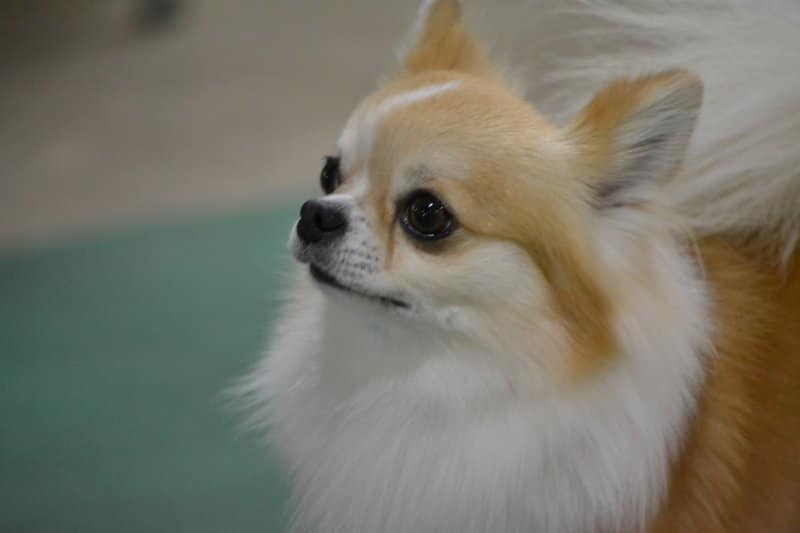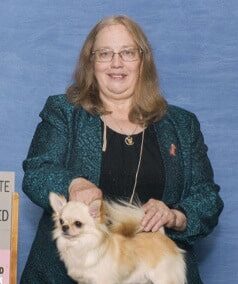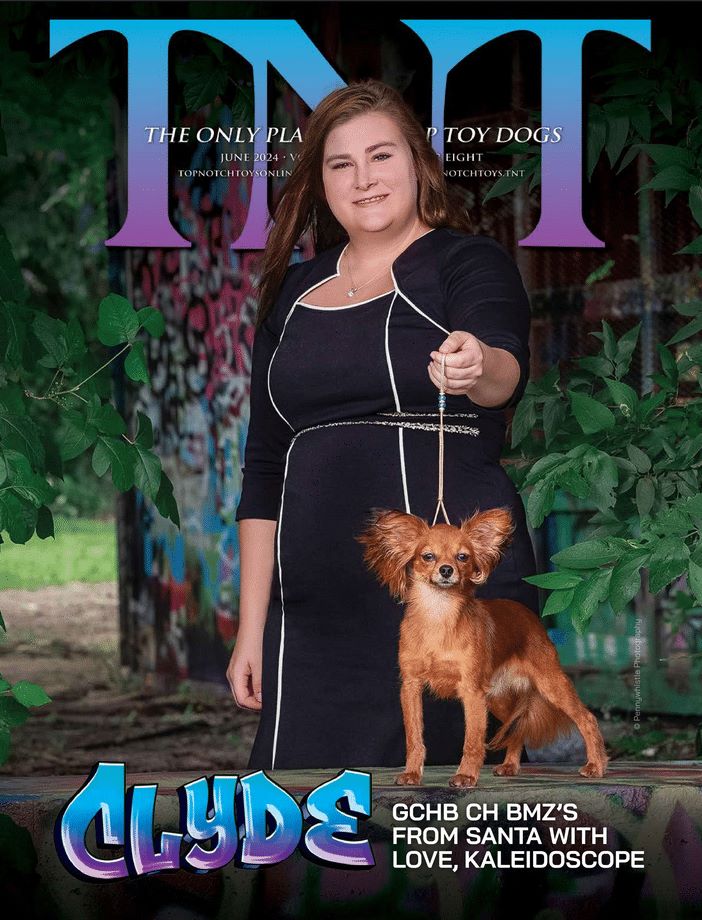Everyone who owns a dog knows how pretty they are, but not everyone is aware that they are very smart too. Sure, we all know they are conniving at getting their own way, getting away with “murder” at times with those pretty expressions and the looks they give. (And in their owner’s eyes, they are all beautiful.) Why not let them put those brains to use? Let them enjoy some activities and learn new stuff, just as we learn new things every day. It keeps their brains busy and out of trouble.
There are so many different activities you can enjoy with your dogs, in spite of their size. There are too many events to even try to list here, but there is bound to be something you would find enjoyable for both you and your dog.
Does your dog like to run? Try Agility. Do you want a well-mannered dog when you go out and about or to the vets? Try Obedience and getting a Canine Good Citizen certificate. Does your dog like to show off and do cute little gestures you could turn into a command? If so, try for a Trick Dog title. Does your dog like to “hunt” things in the yard or track? Try Barn Hunt or even Tracking. Does your dog like to chase? Try FastCAT. So many more activities are available. There are also activities you can do with your dogs that do not include getting a title, that are just as much fun and help others at the same time.
All dogs can do performance events, many even being all-around dogs (performing Conformation, Obedience and/or other performance events and loving companions). As breeders, we should not lump them into categories of Conformation only and/or Obedience only dogs. It is up to us as breeders and owners to keep our dogs in the best physical and mental status as possible. To do performance events, spectators watching should be able to tell the dog’s breed. This includes not only Conformation, which is also needed to be able to perform correctly, but they need charisma, mental and physical soundness, and intelligence. They also need these qualities in order to be a good pet.
Many people think you cannot train for Conformation and Obedience at the same time. This is just not true. Many dogs have titles at both ends. Training for Obedience is also training for Conformation as the dog has to follow on lead, stand and pose, and let some stranger touch them in both events. You just use a different command, or lead/collar. (They do learn the difference between a show lead and a collar and leash.)
When training heel for Obedience, you want the dog to sit when you stop. So, you train the sit command. You also train the stand command for the stand for exam. Use this command when Conformation training so that they don’t sit. Or use any combination you and your dog come up with that works. No one way is best for everyone or every dog. Know your dog and what he/she responds to. My Chihuahua, Miclanjo Mouse That Roared CGC TDI CD CDX AG ASCA CD (Mouse), was promised when he was a veteran that he could go in Conformation one time. He never showed in Conformation before due to having only one testicle. He did perfectly, although I do think he was surprised that there was actually bait in my pocket and in the ring, as no bait is allowed in performance events inside the ring!
Every dog has the potential to do something unique—if you look for it. Mr. Mouse, as his friends lovingly called him, did many tricks but there were no trick titles at that time. However, he and my daughter won many prizes at fairs, parades, school projects, and other activities for creativeness and perfection. He always won the fastest recall. Mouse loved to jump. He would jump over anything he was told to, within reason, of course. There was a Mastiff in our training classes and Mouse would jump over him lying down. If I told him “no cheating,” Mouse jumped on his back and sat. Then I would tell him to go back and do it right, and he would jump over the Mastiff.
Mouse pulled a wagon decorated to the theme of the season or parade, if we were in one. He loved pulling it. His heal work was so ingrained in him that if I tried to switch him to my right side he immediately went behind me to the left side. While pulling his wagon, he also collected over $900 for various rescues. He pulled at shows, parades, and anywhere he could.
Once, when Dorothy Nichols judged the Chihuahua National Rotating Specialty in Maryland, I asked if she would allow him to pull for rescue. She said he could, but only if he did an up-and-back as well as a table exam. Since he had never done this before I didn’t know what to expect, but I picked him up and set him up on the table with wagon in tow. He stood still for the exam. Then she said to take him up and back on the diagonal, which we did. He came to a perfect stand in front of her and presented. Then she said to take him around. He loved the applause as he proudly walked around the ring.
Agility training is great fun for most dogs, although handlers need be in at least decent shape to run around the ring with them. The obstacles are fun for the dogs and are adjusted to each dog by their height. Don’t try to go too fast with training of any sort. Don’t move on to new obstacles too many at a time. Let the dog choose his own pace. You can start training early; just don’t let young puppies jump too soon. When training obstacles, both Agility and Obedience jumps, start low and move up to the correct size for your dog. Each dog will learn at a different speed, in anything. Let them tell you how fast to go.
Therapy work at nursing homes, as well as presentations at schools, Girl and Boy Scout meetings, and 4-H events, is great work as well and beneficial for everyone. It teaches about dogs as well as their care, shows that little dogs can do fun stuff as well as large ones, gives children a chance to be around dogs they may not have seen before, and they learn about different breeds.
Nursing home patients will respond to animals when they won’t even respond to their own families or doctors. Many a patient has responded early on by petting a dog’s head, and all of a sudden they take off and start working with their therapists and doctors. Once, at a nursing home, a patient would not talk to anyone, not even look at them. There was a therapy session with dogs present. The gentleman laid his hand on the dog’s head, and before we left he was scratching the dog’s ears. Two days later the club president received a call from the nursing home requesting to please bring the dog back, as the gentleman had started talking and asked for the dog to be present.
Nursing homes have parties for their residents, costume parties, holiday parties, and all sorts of activities. Get your dog its Canine Good Citizen certificate and go for a Therapy Dog title. This allows you to take your dog to nursing homes and hospitals. Older and sick people really appreciate the effort of those who bring pets in for them. After all, they may have had to leave their own pets in order to live in assisted living or nursing homes.
Small dogs can also play a role as service dogs in areas of diabetic alert, hearing, seizure, and more. Sometimes, there is no training needed; the dog does it by itself, and after several times of a certain behavior at a certain time, the owner realizes what the dog is doing. Other times, some training is needed with outside assistance such as Hearing Ear Dogs. Service Dogs will usually wear a vest to let others know it is working and not to interfere or try to pet. The service they provide is priceless and done out of love.
One of the newer events are Trick Dog titles. While I have not done this myself as yet, I know there are quite a few small dogs out there doing it. One of those is a Chihuahua, Sweet Beans Original Outlaw TKN, who at just four months old and weighing in at less than two pounds earned his first Trick Dog title in spite of the pandemic and no dog shows.
The tricks he performed were suitable for his age and size, and included hold, retrieve, jump over bar, touch, spin, sit, come, get in box, two-feet step up, four-feet on, and teeter. Just goes to show that simple, everyday activities can be turned into a command for a trick. One trick Mr. Mouse did was a simple bow. (He was always trying to get my attention with his chest down and butt in the air.) I turned that into a “pretty bow” command and, instantly, he learned a new trick. This was before Trick Dog titles, but he loved to perform at nursing homes and seminar events.
Most dogs prefer human companionship. They can have beauty, intelligence, stamina, charisma, and the characteristics needed for all areas of exhibiting, either individually or all rolled into one package. Even if you are not interested in competition or titles in other venues, find something your dog likes to do, train it, and enjoy the time with your dog. Your dog will love you for it. And above all, in this time of uncertainty, stay safe. And remember, your dog is more than just a pretty face.










